In today's digital marketing wave, Instagram ads and Facebook ads have become important battlefields for many companies to compete for traffic. Both have their own advantages. Which one is more suitable for your marketing needs? This article will give you an in-depth analysis.

1. The core differences between Instagram ads and Facebook ads
1. User behavior and demographics

2. Advertising performance comparison

3. Differences in advertising formats
(1) Instagram
① Stories ads: 40 seconds full-screen vertical version, support AR filters
② Reels ads: short videos ( <90 seconds), algorithm-recommended traffic accounts for more than 30%
③ Shopping ads: Direct purchase link from product tags to increase order probability
(2) Facebook
① Dynamic Product Ads ( DPA ): Automatically match user browsing history to increase abandoned purchase recovery rate
② Lead advertising: automatically fill in information in the form, reducing the cost of retaining information
③ Canvas ads: interactive full-screen experience, a powerful tool for luxury goods and automotive industries

2. Comparison of the pros and cons of Instagram ads vs Facebook ads
1. Instagram Ads: A Visual Marketing Engine
(1) advantage:
① Compared to other social media platforms, Instagram has the highest user engagement rate
② Strong visual impact
③ Reels short video traffic bonus (platform traffic tilted 30% )
④ Story has a very strong interaction rate and can directly display links outside the platform, directly guiding users to click and visit.
(2) shortcoming:
① Fake influencers are rampant ( many accounts have robot followers)
② High cultural adaptation cost (localized materials required)
③ The market is highly competitive, and the pictures and posts published by influencers must be unique and creative enough to attract users to buy.
(3) Applicable scenarios:
① Fashion / Beauty Products: Use AR Makeup Filters to Enhance the Experience
② DTC brands going global : Instagram Shopping one-click conversion
③ Reaching young users : The coverage rate of Generation Z users exceeds 72%
2. Facebook Ads: Full-link Conversion Platform
(1) advantage:
① Largest user pool ( 2.9 billion monthly active users)
② Strong remarketing capabilities ( DPA advertising reduces customer acquisition costs)
③ Support complex user journeys (from awareness to purchase)
(2) shortcoming:
① High ad fatigue
② High pressure of creative iteration ( short life cycle of high-quality materials )
(3) Applicable scenarios:
① E-commerce repurchase : recover abandoned users through dynamic advertising ( increase ROI )
② B2B service : Messenger online consultation ( low inquiry cost )
③ Localized services : locating surrounding customers based on LBS ( increasing store visit rate )
three, Tips to improve ROI on Instagram and Facebook ads
1. The Golden Rules of Audience Targeting
(1) Hierarchical Positioning Model
① Basic layer : People aged 25-45 with broad interests (covering the brand awareness stage).
② Precision layer : Upload customer email addresses / mobile phone numbers to generate custom audiences and expand similar audiences ( Lookalike ) by 1%-2% .
③ Conversion layer: Exclude users who have already purchased products, and target high-intent groups such as those who have added products to cart but have not paid .
(2) Anti-saturation strategy:
The user is exposed to the same ad ≤ 4 times within 7 days ( the click-through rate will drop by 15%-30% if it is exposed more than 4 times ).
(3) Intent-based targeting
High-intent users: Target people who have had “ life events ” (new moves / new weddings) or “ recent shopping behaviors ” .
(4) Remarketing Tiers:
Weakly interactive users (browsing content) → brand story ads ; strongly interactive users (add to cart / register) → limited-time discount ads.
2. The Scientific Formula for Creative Optimization
(1) Visual and copywriting structure
① Visual avoidance:
Disable Facebook brand blue ( #2E5BFF ) and use orange / purple instead (18% CTR ↑) .
Instagram pictures need to be lifelike (non-posed pictures have a 42% higher conversion rate ).
② Copywriting formula:
Start with a pain point + solution + urgency CTA ( “ Limited time 24 hours! ” )
(2) Content Ecosystem Ratio

3. Anti-fraud and compliance management
(1) Fake traffic identification
Identifying real user traffic and verifying traffic quality are key steps in increasing advertising revenue. You can use IPFoxy 's dynamic IP to regularly rotate and simulate the access paths of real users in multiple countries to access the website to check whether the ads are displayed normally, whether the advertising materials meet the regional compliance checks, and find the most favorable combination of regions and time periods.
(2) Account anti-blocking strategy
① Accounts logging in from a large number of IPs in different geographic locations in a short period of time , or using data center IPs or low-quality residential IPs may trigger risk control. It is recommended to use IPFoxy 's stable, clean static residential IP to avoid frequent node switching.
② The material should be modified ≤ 1 time per day , and absolute terms such as " best " and " first " are prohibited (replaced by UGC ).

4. Platform collaboration strategy
(1) Traffic collaborative path
Instagram → Reels Trend-Driven Traffic → Facebook → DPA Dynamic Remarketing → High-Intent Users → Messenger Consultation → Conversion
(2) Budget allocation recommendations
① Visually driven products (fashion / beauty) : Instagram 60% + Facebook 40% .
② High-ticket items / local services : Facebook 70% + Instagram 30% .
(3) Summary: ROI improvement core logic
Instagram is about volume, Facebook is about conversion :
① Short-term explosion : Use Instagram Reels/Stories to grab the attention of young users (visual + hot spots).
② Long-term conversion : Rely on Facebook DPA remarketing + Messenger customer service to undertake high-intent traffic.

In summary, Instagram ads and Facebook ads have significant differences in user characteristics, advertising formats and marketing effects. Companies should reasonably choose a platform that is suitable for their own product characteristics, target audiences and marketing goals, and skillfully use the synergy between the two to maximize advertising benefits, accurately reach customers and enhance brand influence.